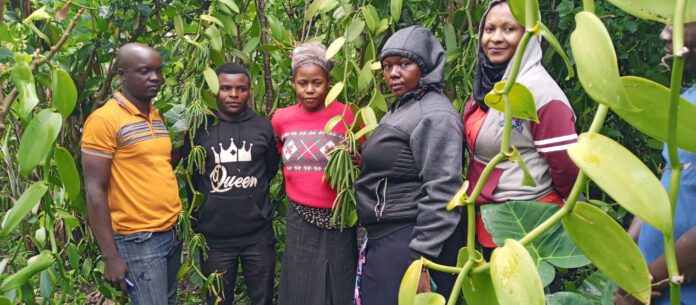Youth in Serere district have expressed their potential to massively thrive through agriculture, particularly in the vanilla sector. Vanilla farming offers a sustainable livelihood and empowers young people to become entrepreneurs and community leaders.
However, many aspiring farmers face challenges in accessing the necessary resources, such as quality vanilla seedlings. This article seeks to highlight the importance of supporting youth in this endeavor and calls for donations of vanilla seedlings.
Vanilla is a high-value crop with significant market demand backed up with the right training and resources where young farmers can transform their lives and contribute to their communities.
Donating vanilla seedlings will make a substantial difference for young farmers in Serere district, which will allow access to resources for many youths who lack the financial means to purchase quality seedlings.
Community development activities that support youth in agriculture foster local economic growth as these young farmers succeed; they create jobs and inspire others in their communities.
Sustainable practices in vanilla farming encourage sustainable agricultural practices that benefit the environment and promote biodiversity, a sign of successful youth-led initiatives that can inspire potential donors.
Read Also: CSOs Demand Government’s Action on Idle Youth
Investing in the future of the youth through vanilla farming is not just an act of charity; it is an investment in sustainable development and community resilience. As a result, there is a need to empower the next generation of farmers in Serere district and help them cultivate a brighter future.
The British farmers introduced vanilla to Uganda in the 1920s, and vanilla became an important commercial crop beginning in the 1940s. Today, it is primarily grown on small family farms spanning just a few acres at most, often alongside other crops like coffee.
Uganda produces between 250 tons and 300 tons of cured vanilla beans annually. In 2021, the country exported 189.180 tons of cured vanilla valued at $21.55 million (about UGX 81 billion) according to Bank of Uganda statistics for 2023, placing her in the 2nd position in Africa.
The government is committed to supporting youth with an entrepreneurial mindset through community support for youth agriculture while providing clear calls to action for potential donors by showcasing the success stories of young Ugandans.















